Pick
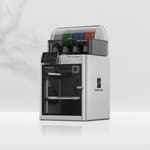
- High-tech calibration & QA systems
- AI-powered print monitoring
- All-metal hot end, tough nozzle
- Wasteful AMS material purges
- Cardboard spools trouble for AMS

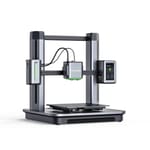
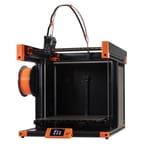
It wasn’t long ago that the best 3D printers were defined primarily by cost savings. The “race to the bottom” did a lot to make 3D printing an accessible hobby for regular consumers, and desirable hardware and quality-of-life features continue to become more affordable – appearing on more and more low-cost 3D printers that seem to have brought down Creality’s Ender 3 dominance.
With reasonable hardware costs achieved, what’s the next step? Some of the earliest manufacturers known for good quality equipment moved on to professional 3D printers, increasing their hardware and customer services to warrant system prices well above $2,000 – out of a typical consumer’s budget. But other manufacturers have cropped up offering “premium” 3D printers: reasonably priced, high-quality hardware with an experience that’s a fair bit more appealing than the box of parts that gets tossed onto your doorstep when you order a 3D printer for around $200.
With an increasing amount of 3D printers coming to the market that occupy this middle ground, we think it’s high time to highlight a few picks. This list is comprised of the available 3D printers that offer a better experience for the discerning hobbyist who wants a system more reliable than the affordable machines flooding the market, with an experience that’s worth the extra cost.
What exactly makes a 3D printer “premium” is pretty subjective. Some people will, undoubtedly, say it’s hardware quality above all else – but we have something a little different in mind. All the machines listed here will have excellent hardware quality and quality assurance, but the overall experience will be something that inspires confidence in, and puts less onus on, the end user.
That means that, in addition to hardware quality and unique features that set the system apart, premium machines will be aesthetically pleasing, have top-notch packaging to ensure your 3D printer is received in pristine conditions, straightforward assembly and instructions (if any assembly is required at all), simple calibration, and a level of customer service that will appeal to consumers buying a product that’s a cut above.
In general, these printers will cost above $800 and be suitable for individuals and small businesses with limited 3D printing needs, but lack the sort of service you can expect from truly professional brands. If you need something extremely reliable for a business check our list of The Best Professional 3D Printers.
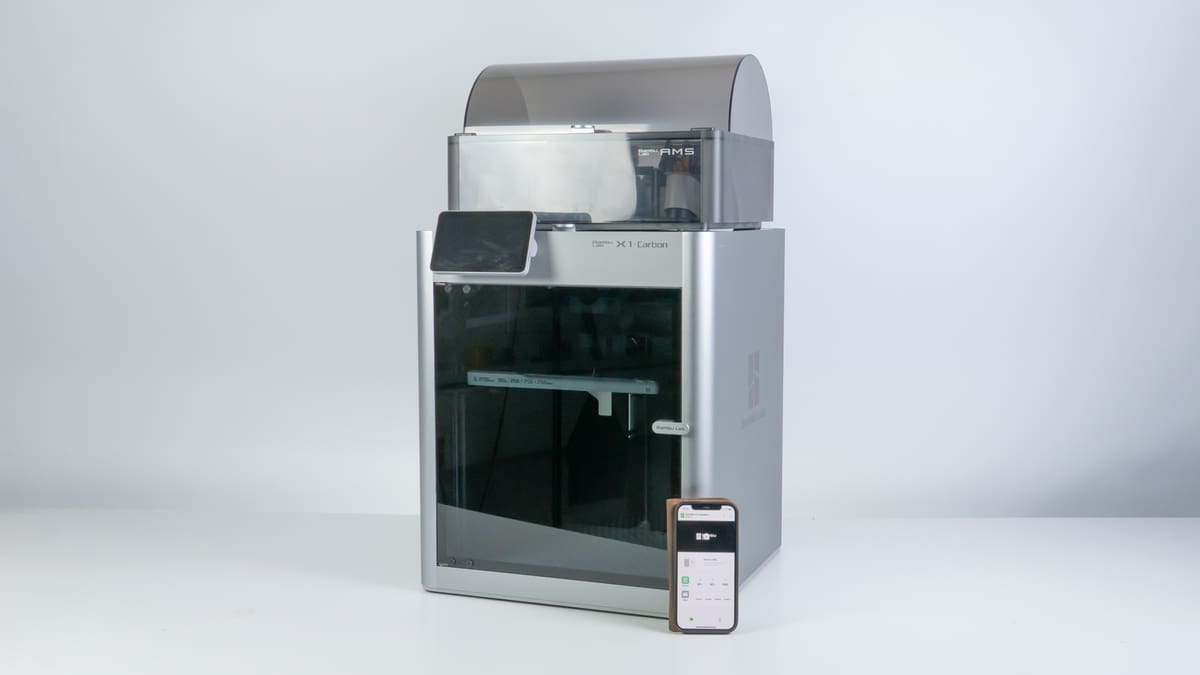
Bambu Lab hit the scene last year and made a huge splash with its X1 Carbon system by promising some pretty extreme innovation. The $1,199 printer has earned its place as our top pick for its excellent, innovative features and a middle-of-the-road price in this segment.
The X1 Carbon is a 256 x 256 x 256-mm build volume CoreXY 3D printer absolutely crammed with niche tech. Probably most impressively, the system uses lidar with a 7-micrometer resolution to level its bed and check the first layer to recalibrate linear advance if required. Lidar is a laser technology that has incredible applications in many fields, like scanning through the thick rainforest canopy for ancient architecture. The tech bounces a laser to gauge variable distance and should provide an impressively accurate image of our print beds and first layers – warps and all.
The system also comes with AI print detection that — with the combination of a camera, lidar, and an analog force sensor — keeps close guard of poor first layers and spaghetti to let you know when something is wrong in good time. Always good to have an extra pair of eyes.
The X1 Carbon also has the best of the typical hardware you’d look for in a 3D printer, of course. It has a 574-gram toolhead that contains the all-metal direct extruder capable of hitting 300 °C with a hardened steel nozzle, unlocking more exotic filament printing; the system is fully enclosed, and, with the additional purchase of one or more “AMS” automatic material system – a filament-swapping unit like Prusa’s MMU – capable of printing with up to 16 different spools of filament. The printer is stacked, and the best example we can think of to be considered “premium”.
Since its launch, Bambu Lab has continued improving the X1 and its other products, and has released new 3D printer models at an impressive pace. That said, the company hasn’t been without problems in its second year. The OEM’s cloud-based printing software suffered from a hiccup recently that resulted in serious and unexpected consequences for some users. Still, the company has proven communicative and willing to adapt to challenges. We’ve been satisfied with its responses to problems and criticism overall.

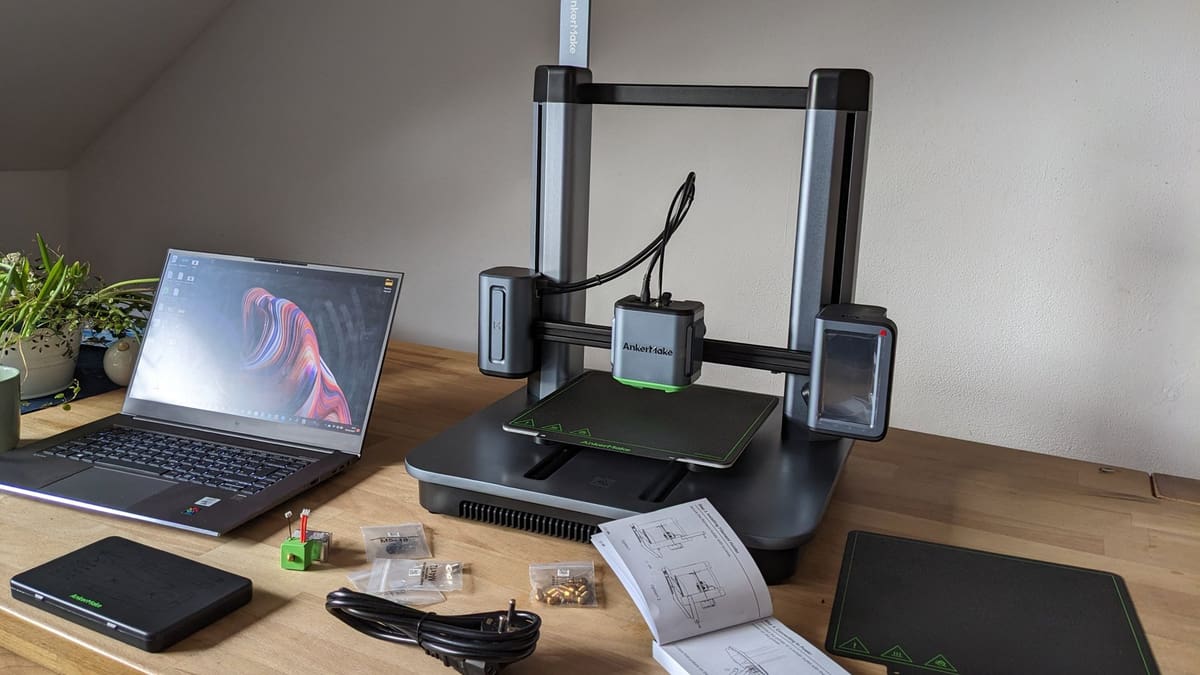
Anker, popular manufacturer of charging cables and other cell phone paraphernalia, stepped into the 3D printing world with its sub-brand, AnkerMake, last year with a Kickstarter campaign to crowdfund the AnkerMake M5. At $699, the M5 is the most affordable option in this list and remains in the mid-range of what we’d consider a “budget” 3D printer – managing to sneak just below the $800 figure we have in mind for an “affordable” premium 3D printer.
The M5 is a typical Cartesian XZ-head – a bed slinger – with a fairly average 235 x 235 x 235 mm build volume. It has a direct extruder with a 9.37 reduction ratio, and dual gears for good, even force on filament. It also has a sleek, high-quality frame that manages to discretely house its more premium features and save some space. That frame includes a touchscreen display and camera, which is crucial for the M5’s AI-powered failure detection. The camera is set up to spot common errors like layer shifting, spaghetti, blocked nozzles, or prints coming off the bed mid-print. The printer connects to Wi-Fi to alert users via the AnkerMake app if any of these failures are noticed.
When we first reviewed the AnkerMake M5, it was a sleek printer with a rocky start. Its AI part monitoring was hit-and-miss and rather opaque as a process, and its Cura-based slicing software left a lot to be desired. A lot has changed since. AnkerMake has updated the triggers on its monitoring and given users a sensitivity slider in the machine’s companion app to adjust the feature as they see fit. AnkerMade slicer has also seen improvements, meeting advertised expectations, but the OEM has said it will 86 the current version in favor of a yet-to-be-released PrusaSlicer-based version. In the meantime, AnkerMake released profiles for stock Cura and PrusaSlicer – though all the M5’s premium features won’t work through these slicers.
Where the M5 succeded out the gate was with print speed. It lived up to its promise of quality prints at 250 mm/s and has actually raised that to 500 mm/s since release – competing with the G-sensor outfitted Klipper 3D printers we see increasingly on the market. (In fact, AnkerMake said it used the Klipper input shaping and pressure advance algorithms as a reference.)
Clearly, the AnkerMake M5 had some growing pains on launch, but subsequent updates have seen promises met – and in some cases surpassed – since. And with $100 off its launch price. With its sleek metal casing, compact design with the interface riding the X-axis, integrated camera and detection capabilities, and Wi-Fi connectivity – all of which make the machine a simple experience for less experienced makers – the AnkerMake M5 remains our pick for a premium machine at a reasonable price.

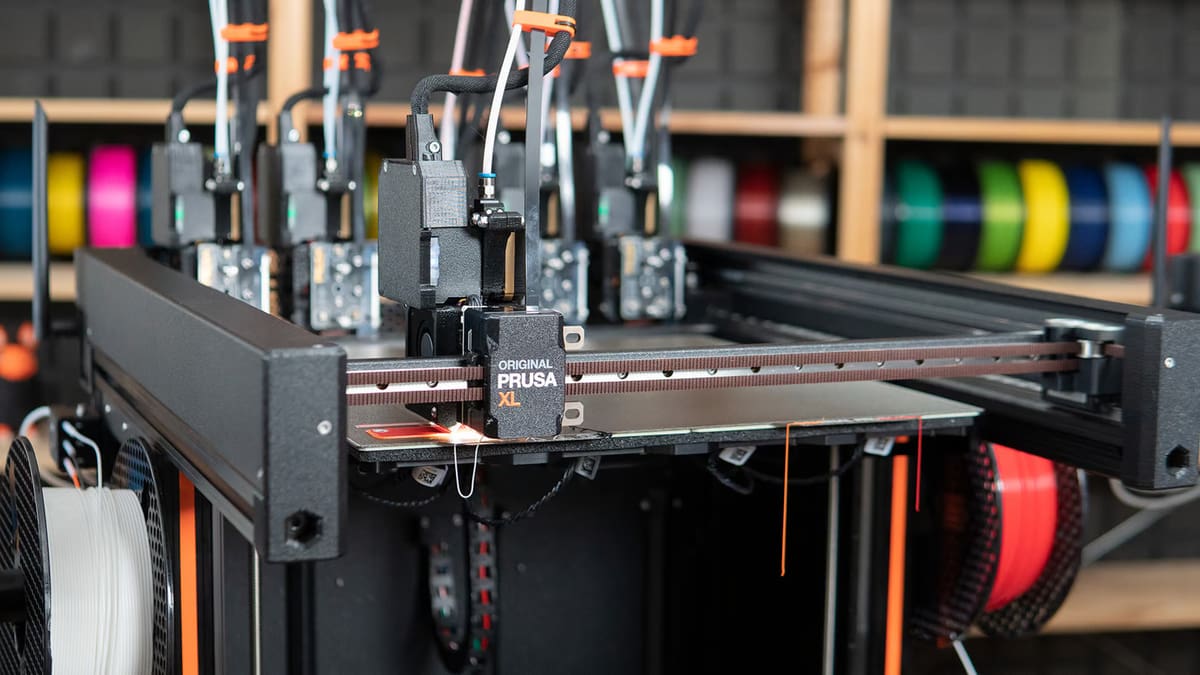
Prusa Research’s big 360 x 360 x 360 mm build volume tool-changing CoreXY machine, possibly the company’s most highly anticipated system ever and certainly one that toes the line between professional- and consumer-oriented, is finally here. Well, mostly. Though all variations of the system have now started shipping, new orders won’t land on your doorstep until sometime in the first half of 2024.
The Original Prusa XL is packed with so much interesting technology that we’ve had to cover it over two articles to give you the full picture – our Multi-Toolhead First Look, where we went hands-on with the five-toolhead XL at Prusa Research’s HQ, and our Nextruder Deepdive, where we get into the nitty gritty of Prusa’s advanced direct extruder. For that, the unique tool changer, and the system’s generous volume, the Original Prusa XL is our premium upgrade pick.
Compared to the machines above, there are a few tradeoffs that might make the Original Prusa XL look a little less “premium” than the others, but its unique features make up for the novelties it might lack – and from a company that offers extremely reputable support and community engagement to back it up.
Compared to other premium printers, the XL is strictly function over form. Prusa has stuck with a rotary knob for its interface, using a color menu that looks just like the Original Prusa Mini+. It doesn’t have an integrated camera or any sort of “AI”, but does have print failure detection. That’s accomplished through the Nextruder and its proprietary load cell sensor, which enables failure detection, Prusa’s “always-perfect first layer”, and dirty nozzle detection.
The extruder also boasts a custom E3D nozzle, heat break thermistor, 1:10 planetary gearbox, and a dedicated CPU to help it all work without over-crowding the printer’s mainboard. Add to that the precision tool changing capabilities that will allow users to swap not only materials mid-print but potentially switch between technologies like CNC and laser engraving (though Prusa Research hasn’t said much about tool heads for these functions yet, and getting them to work might be entirely up to you) and you’ve got one powerhouse of a workhorse machine.
The Original Prusa XL also has a few great quality-of-life features that make the machine easy to use on a daily basis and help accommodate the printer’s gargantuan size. Wi-Fi and Ethernet for network integration, a draft shield to help along some of the more temperature-sensitive materials, and a segmented print bed divided into 16 individually addressable sections that ensure users need not always heat that massive volume for small parts; your power bills will thank you.
Full disclosure: this machine has not received a full, formal review at All3DP. We previously included this 3D printer in this guide on the merit of seeing the system working in person at multiple 3D printing events. Now, given the community response and All3DP’s unrestricted (though time-limited) testing of the machine at Prusa Research’s HQ, we’re reaffirming our choice.

Before you head down to the comments section wondering where your favorite 3D printer is and why it didn’t make this list, with all its lovely bells and whistles that make it stand out from the crowd, hold on. We’ll have you know that this list of the best premium 3D printers was an excruciatingly democratic process – and that means plenty of good candidates didn’t make the final ballot. But fret not, we’ll shed a little light on our decisions and let you know a few of the other options we considered.
The 3-in-1 Snapmaker Artisan seemed an obvious choice for this list. The now fizzled 3-in-1 printer craze really kicked off when the original Snapmaker became the third most-funded tech Kickstarter in history, but while many manufacturers to attempt this niche have since backed off, Snapmaker has kept going — making significant improvements to its products. Its latest, the Artisan, looks extremely promising, especially in terms of good ol’ 3D printing. That said, for the high price compared to the other options, we felt our readers who are primarily interested in 3D printers want machines totally focused in that area. If you want a 3-in-1, you’re sure to find the Snapmaker Artisan on your own.
But Snapmaker also has the Snapmaker J1 — an extremely high-speed IDEX machine that claims it can reach print speeds of up to 350 mm/s. This was a tough one to eliminate, and was essentially going up against the AnkerMake M5 for the final spot. The AnkerMake M5’s relatively low price and AI print-failure detection won it out. IDEX is awesome, but it’s not as new and exciting as the material-saving AI-powered print monitoring that’s starting to appear as a stock feature. A permanent watchman on duty just screams “premium” to us.
We considered the Original Prusa MK4 for this guide, the latest version of Prusa Research’s tried-and-true 3D printer. Prusa continues to offer incredible 3D printer with exceptional support, documentation, and community, but the style of 3D printer seems to have had its time in the sun. It doesn’t look or feel “premium” anymore, though the Mk4 certainly bridges the gap somewhat in terms of features. It’s by design, really, and many users will appreciate Prusa’s focus on user choice and open source.
The new FLSun V400, a delta 3D printer with stock Klipper firmware, was in this running. This printer was ultimately excluded because the surrounding experience didn’t have the appeal the other machines listed do, with an assembly process for the hulking machine and instructions that could sometimes be clearer. But ultimately, like the J1, features like print monitoring on offer from other manufacturers just felt more premium; even if stock Klipper remains somewhat unique.
Finally, the Creality K1, boasted as a new “flagship” by the OEM appears to have all the makings of a premium offering set to compete with Bambu Lab’s machine. Unfortunately, our experience with the system was anything but premium. Between firmware that’s lacking polish – to say the least – and early design issues with the hot end affecting some units (including ours) the K1 simply didn’t make the cut.
Bambu Lab has continued releasing new machines and the new P1S bridges some features between the affordable P1P and X1 series with an enclosure and timelapse camera. Still, with an old-school-feeling screen and a lack of more premium features, we didn’t feel it was truly a contender for this list.
We’re testing new 3D printers all the time, and new information is always coming to light. We update this list whenever we come into important information about the inclusions, or as soon as we feel a new printer deserves to be given the mantel. But, just because a printer drops off this list does not mean it’s suddenly bad. Far from.
To help you keep track of past recommendations and structural changes to our picks, here’s a changelog of what’s happened to this article:
Update — September 15, 2023: Though our picks haven’t changed, a lot has happened since we first published this list. We decided to pop in and update the descriptions of our top picks to keep them current and to convey why more recently released machines didn’t make the cut. Notably, we removed the Lulzbot Mini 2 from our Other Machines section to make room for closer contenders.
Update — January 27, 2023: In an update from Prusa Research that’s probably affirming to critics of the Prusa XL’s early inclusion on this list, the XL has been pushed back again from the expected January shipping to March. And units with multiple toolheads will follow behind two months further still. We popped in just to update the item accordingly.
Premium 3D printers aren’t exactly new in the market, but there seems to be more coming out lately that fit the description well. Unfortunately, many of the systems that come to mind today have yet to be released, and some are launching with crowdfunding efforts like Kickstart campaigns – a practice that’s become something of a frustrating industry norm.
In the list above, we mention whether systems are unreleased, funded by Kickstarter, and whether we’ve had our own hands on them to pass on these impressions – even if our full review is still pending.
If there’s one thing that testing a lot of 3D printers has taught us, it’s that maintaining a broad benchmarking scheme for 3D printers is impractical for getting a sense of what a 3D printer is like to use and live with. Holding a sub-$200 self-assembled printer for hobbyists to the standard of a $6,000 production machine designed to handle engineering-grade materials won’t tell you that the former is a breeze to set up and the latter a tangled web of firmware updates, buggy systems, and unreliable performance.
We want our reviews and buyer’s guides to cut straight to the chase. What is it like to use a printer? What are the defining features like? What didn’t we like? And, more importantly, is it worth the money? We don’t want to get bogged down benchmarking numbers out of context or hung up on issues affected by more variables than we can control.
Our buyer’s guides and reviews take the intended end user of a 3D printer into consideration. We imagine what they’re likely to do with it and focus the testing on challenging this. If we have a large-volume printer, for example, we’ll be printing – surprise, surprise – large prints, making use of the entire bed, and checking the performance at the limits of Z-height.
Other points of consideration for what makes the best 3D printer include ease of use, supporting software, and repair options. If something goes wrong, how easy is it to fix the machine? Does the documentation or customer service provide adequate information?
We strive to answer all these questions and more in our quest to find the best 3D printer for you.
Trust is important to All3DP, so our product testing policy is strict. When sourcing test units from a manufacturer, we do so under a zero guarantees policy. We make no guarantee of coverage in exchange for the printer, and the first time a manufacturer sees what we think is when we publish the content.
If a manufacturer doesn’t reclaim the unit after testing is complete, it is donated to a local cause or goes into deep storage for responsible disposal later. We occasionally buy machines for testing, too. In such cases, machines purchased by All3DP either remain in the office for team usage or are donated or disposed of in the manner described above.
Manufacturers or benefactors donating units for review do not influence the outcome or content of the reviews we produce. To the best of our ability, we will investigate abnormal issues with the manufacturer to glean better context or get insight into their awareness of the problem. But we make no excuses for poor design or bad QA.
One method we monetize our content at no additional cost to the reader is through affiliate product links. If you click on a shopping link featured in our buyer’s guides and reviews, we may receive a small commission from the store if make a purchase. This is at no additional cost to you. For more meaty content policy details, we cover it all in the advertising and commercial activities section of our terms of use.
For most readers, our top recommended 3D printers are your best bet in a given category.
But, facing the fact that there is no one-size-fits-all solution to home 3D printing, we’re here to help. Here are some pointers to orient you in this terminologically dense but wonderful world. (A word on terminology, we have a handy glossary of terms to know at to bottom of this article.)
Many 3D printers pitched for “beginners” or children go to such lengths to baby the user that they quickly become claustrophobic experiences. You will encounter more limitations than possibilities as your experience grows. If you aren’t satisfied with a “beginner” 3D printer’s features, we’d recommend a budget pick instead. You’ll save a little money, and the opportunity to learn by doing is far greater. And if something goes wrong, there are giant tribes online for each printer that have already asked and answered every question under the sun.
While the general quality of budget 3D printers has dramatically improved in recent years, quality control is often lacking. While manufacturers with large user bases are adapting to meet the demands of their newfound fans, including better customer support, there are usually better wells of knowledge to be found in the owners themselves, who contribute to the vast forum knowledge bases for some 3D printers.
We have zero obligation to manufacturers to sugarcoat what we find, and the first time they read it is when you do too. That’s why you can trust our reviews. We don’t pander to anyone, and our experience with the printer is what you read on the page.
If you can’t find any information about a printer you’d like to know more about, let us know at editors@all3dp.com.
A 3D printer for the home is rarely ever a one-and-done investment. Besides the continual purchase of materials, maintenance costs on perishable printer parts can stack up – think nozzles on an FDM printer or FEP film on an MSLA machine. Of course, parts can wear down or break, too, meaning sourcing replacement parts is a sensible consideration if you plan to print long-term. Printers with roots in the RepRap movement and open-source designs will be easiest to source parts for, with off-the-shelf components part and parcel of the design ethos behind them. Enclosed-design printers aimed at beginners may offer the gentlest introduction to printing, but your options to source spare parts will often be limited to the manufacturer. That’s if you can even get to and diagnose the problem.
The thrill of a new hobby will only sustain you so far. Being the desktopification of an otherwise complicated manufacturing process, expect to encounter, sooner or later, problems with a home 3D printer – even the occasional show-stopping issue. Having an end goal in mind for your printing gives you purpose and a reason to learn the solutions to the problems. Printing simply because it looks cool will result in a small mountain of useless doodads and, eventually, disinterest at the hands of cost, frustration, and the buildup of useless plastic trash.
Most home 3D printers are single extrusion fused deposition modeling machines, meaning a single printable material extruded through a single nozzle. Versatile enough for many applications through material compatibility, they’re safe machines to start with. But if you know you need to print objects with challenging geometries or semi-enclosed volumes, a dual extrusion printer would make your printing far easier. Likewise, single objects that need to have different material properties will only be achievable with dual extrusion. A resin printer will be the way to go for high-detail miniatures. Understand the technologies to find a printer that best suits your needs.
While the size of FDM 3D printers can vary greatly, the spillover is small. You’ll get some emissions from the filament melting, cloying the air, making it inadvisable to spend prolonged periods nearby. Generally speaking, the cleanup is minor and relatively easy to contain, depending on the models you print.
Resin 3D printing, however, is dramatically different and has unique demands that should make you think twice before investing. To varying degrees, the resin is smelly and toxic to you and the environment. It requires dedicated cleanup stations and personal protective equipment. You typically need 95 %+ isopropanol to clean prints and dissolve uncured resin from surfaces.
All printers should be operated in well-ventilated spaces, but this applies doubly to resin 3D printers.
While many excellent 3D printers have gotten their big break on Kickstarter, there’s the unavoidable issue that the platform is not a store. You are not buying a printer when you commit money to a campaign on Kickstarter; you are backing a vision. It’s putting money into the pot to help a company or person trying to achieve something.
You get nothing in return if a project is grossly mishandled and the money disappears. Often what you do get is the beta version of the product. You are paying for early access and all the wrinkles across all stages of the product that come with it.
We’re seeing more big-name companies turning to Kickstarter than ever to launch their products – it’s a safe way for them to gauge demand and drum up some interest against the pressure of a ticking countdown. Despite many companies being capable of outright launching products, they go cap-in-hand to enthusiasts with the promise of shiny new tech. Don’t be that user unless you absolutely must be the first to use a product and have money you can afford to lose.
We don’t think it’s worth the risk, but in the interest of cool new tech, report on new campaigns with our news coverage. You will never see a Kickstarter 3D printer in our buyer’s guides unless it has completed its campaign and the printer is widely available at retail, with all the protections that come with buying from a store.
But where’s the UltiMaker? Or Formlabs? What about Raise3D? Desktop Metal?
In the past, we’d list the best professional 3D printers alongside what we consider consumer or hobby-oriented machines (the printers we mainly focus on). An apples and oranges comparison, we know.
With this in mind, we created All3DP Pro, a wing of our content exclusively covering the professional applications of 3D printing and additive manufacturing solutions. Here’s a selection of articles covering the best 3D printers for professional use to get you started.
Choosing the best 3D printer is tricky, not least because the terminology surrounding 3D printing is dense. Here are some need-to-know terms, their explanations, and useful links to help you on your way to 3D printing mastery.
FDM: Fused deposition modeling, otherwise known as FDM, is a 3D printing process that extrudes heated thermoplastic material through a moving nozzle to build an object layer by layer. FDM is a trademarked term, which led to the RepRap open-source movement to coin the alternative phrase “fused filament fabrication” (FFF), but the two are interchangeable.
Filament: Filament is the base material used to 3D print objects via FDM. The filament is typically a solid thermoplastic fed to a print head, heated to its melting point, and extruded through a small nozzle. Filament is commonly available in spools of either 1.75 mm, 2.85 mm, or 3 mm diameter widths – dimensions that dictate the printers that can use them.
G-Code: G-code is the machine language used to instruct computerized tools such as 3D printers. Giving coordinates and instructions for tool heads and other non-movement functions, it is almost exclusively generated by slicing software. It comprises a library of commands to control specific actions like motion, speed, rotation, depth, and other related switches and sensors used in a machine’s operation. You can get to grips with G-code in no time with our guide to G-code commands.
Heated bed: This is a build plate that is heated so that the few layers of extruded plastic are prevented from cooling too quickly and then warping. A heated bed is essential for working with ABS or PETG materials but not so much with PLA.
Hot end: This is the cluster of components that heat and melt the plastic for deposition through the nozzle.
Extruder: Used by some to describe the entire system of parts that pushes and melts filament, extruder can also refer specifically to the motor and accompanying gears that grip the filament, feeding it to the hot end. How the extruder is arranged can affect the printer and its capabilities. There are two common arrangements: Bowden and direct. It’s a messy subject with overlapping terms and technical explanations; our guide to 3D printer extruders gives you all the knowledge to make sense of it.
Bowden: A style of extruder that sees the extruder motor positioned away from the hot end – typically the structural frame of the printer or on one end of the X-axis gantry. So-called for the Bowden cable and its action of allowing a wire to move freely within tightly constraining tubing, the Bowden extruder feeds filament through a PTFE tube directly into the hot end.
Direct Extruder: The other commonly seen extruder type, a direct extruder sees the extruder motor and associated feeding mechanism mounted directly to the hot end, with barely any distance between the feed and the melt zone of the hot end.
Dual Extrusion: Some 3D printers carry two extruders/hot ends, allowing them to incorporate multiple colors or materials into the same print job. While the obvious appeal comes from the possibility for decorative two-tone prints, the real benefit of dual extrusion systems is combining different materials, such as dissolvable support material, to enable the printing of otherwise impossible geometries. It’s a deep topic worth exploring more in our guide to all you need to know about dual extrusion.
PLA: Polylactic Acid, otherwise known as PLA, is a thermoplastic commonly used as a material for printing with FDM 3D printers. It’s easy to work with and is available in many colors and finishes. PLA is somewhat brittle – don’t expect to print strong items with it – but it remains popular for decorative printing thanks to its low cost. You can learn more about PLA in our guide dedicated to the topic.
SLA: Stereolithography is a 3D printing technology that falls under the broader process of vat photopolymerization. The term is often (incorrectly) used to describe all methods of vat polymerization – really, it’s a particular technology that uses a directed laser beam to trace layers into a vat of liquid photopolymer resin. Alongside SLA, other technologies are considered vat polymerization.
Resin: The material used in desktop SLA, DLP, and LCD (MSLA) 3D printers. A blend of chemicals that includes a photoinitiator, resin solidifies under ultraviolet light. Highly toxic and difficult to clean up after a spill, care, attention, and personal protective equipment are musts when working with resin. It is an unpleasant material, and wastage must be disposed of in accordance with local laws. Despite all the warnings, it’s the only way to go for intricate detail.
LCD 3D Printer: A common term for resin 3D printers that use an LCD as a layer mask over UV light. The de facto standard in inexpensive resin 3D printers, the technology is cheap and widely used. The LCD panels are consumable, though, with monochrome LCDs typically having lifespans in the low 1,000s of hours.
MSLA: Mask stereolithography (MSLA) is a term coined by Structo but popularized by Prusa Research. It refers to, basically, the LCD 3D printer as described above.
Micron: One-thousandth of a millimeter. This unit of measurement is commonly used in 3D printing as a value to indicate accuracy, resolution, or surface finish.
Slicer: 3D printing works by building an object layer by layer. A slicer is a program that divides a 3D model into flat layers and generates the machine code for the printer to trace out said layers. The output of a slicer for FDM 3D printers is typically G-code, which gives instructions and coordinates for the printer to execute. Our deep dive explaining what exactly a slicer is gives good foundational knowledge. Many popular slicers are free and open source. Others are proprietary and machine-specific. It’s an essential tool for successful 3D printing.
STL: STL is the most popular file format for 3D printing. Developed by 3D Systems in the ’80s, the STL file type only contains the surface geometry of a 3D object. Despite industry efforts to move onto more efficient and data-rich formats such as 3mf, STL endures and is the most commonly found 3D model file type on popular 3D model file repositories. We explain in more detail in our guide to what exactly STL is.
Open Source: The term given to a product, typically software, but also applicable to hardware that is freely open for others to modify and redistribute according to their needs. In 3D printing, this is often in the spirit that individuals are free to modify, improve, and share changes to the source material for others to test, iterate, and reciprocate. Open source licenses govern the fair and correct usage of open source works, giving terms and conditions that ensure the freedom of access to the creation and any derivatives.
RepRap: A project started in 2005 by Dr. Adrian Bowyer, a mechanical engineering lecturer at the University of Bath. Created to develop a replicating rapid prototype, a low-cost machine capable of printing replacement parts for itself or other new machines. The vast majority of desktop 3D printers stem from the work laid down by the RepRap project. We have a fascinating alternative RepRap Wiki page on the topic if you want to dig deeper.
Correction – August xx, 2023: A previous version of this article’s table stated incorrect “build difficulty” for the AnkerMake M5 and Original Prusa XL.
License: The text of "The Best Premium 3D Printers" by All3DP is licensed under a Creative Commons Attribution 4.0 International License.
CERTAIN CONTENT THAT APPEARS ON THIS SITE COMES FROM AMAZON. THIS CONTENT IS PROVIDED ‘AS IS’ AND IS SUBJECT TO CHANGE OR REMOVAL AT ANY TIME.